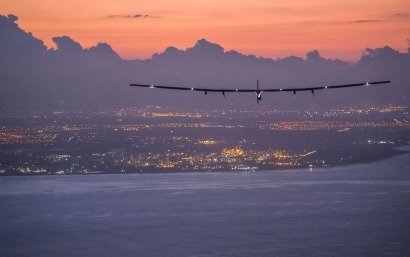
On Wednesday they announced the temporary suspension of their history-making bid due to "irreversible damage caused by overheating batteries."
The earliest the flight will resume is April 2016.
The batteries on the plane, called the Solar Impulse 2, overheated on the first day of its journey from Japan to Hawaii, and there was no way to cool down the system, the team said.
“The damage to the batteries is not a technical failure or a weakness in the technology but rather an evaluation error in terms of the profile of the mission and the cooling design specifications of the batteries,” a written statement on the team's website said.
Pilot Andre Borschberg landed the Solar Impulse 2 at Kalaeloa, a small airport outside Honolulu, on July 3.
In the process, his 118-hour flight from Nagoya, Japan set a new world record for as the longest nonstop solo flight.
Waxing philosophical, the team said "setbacks are part of the challenges of a project which is pushing technological boundaries to the limits."
The Solar Impulse 2 took off from Abu Dhabi in March, and made scheduled stops in Oman, Myanmar and China. It then made a detour to Japan, where it stayed for a month after high winds damaged a wing.
With its arrival in Hawaii, the team has completed eight-legs of the round-the-world journey, and is currently just a little shy of half-way home.
Solar Impulse 2 will be housed in a University of Hawaii hangar at the Kalaeloa airport on Oahu while repairs are made.
In the meantime, the team plans to test alternative cooling methods to prevent overheating the rest of the way.
For additional information:

